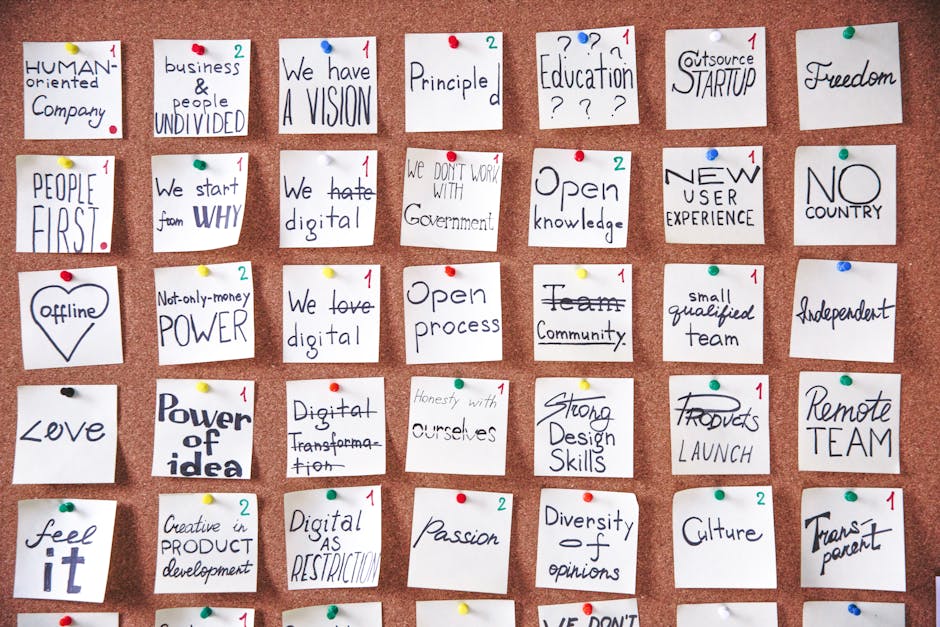From Idea to MVP: How to Launch Your Tech Startup Without Breaking the Bank
‘I can’t afford to build my app.’
These six words have killed more South African tech dreams than load shedding and poor internet combined.
Trust me, I’ve been there. Three years ago, I sat across from a developer who quoted me R420,000 to build version 1.0 of my booking platform. I nearly choked on my flat white. Needless to say, that meeting ended my entrepreneurial journey… temporarily.
But here’s what I’ve learned since then: launching a tech startup on a skinny budget isn’t just possible—it’s becoming the norm.
The South African Startup Reality Check

Let’s face it. We’re not in Silicon Valley where VCs throw millions at startups with nothing more than a clever name and a PowerPoint deck. In South Africa, we face some unique challenges:
- Limited access to early-stage funding (especially pre-revenue)
- Higher costs relative to average income
- Smaller pool of affordable technical talent
- A risk-averse investment culture
As my friend Thabo puts it: ‘In Silicon Valley, they fund dreams. In South Africa, they fund profits.’
But don’t despair! This financial constraint often breeds the most resourceful entrepreneurs. As we say in South Africa, we make a plan with pap en vleis (meaning we find creative solutions with what we have).
Bootstrap vs Broke: Understanding the Real Costs

Before diving into strategies, let’s break down what you’re actually paying for:
| MVP Component | Traditional Cost | Lean Alternative |
|---|---|---|
| UX/UI Design | R30,000-R80,000 | Templates, DIY tools |
| Front-end Development | R100,000-R200,000 | No-code/low-code platforms |
| Back-end Development | R150,000-R300,000 | Existing APIs, managed services |
| Mobile App Development | R250,000-R500,000 | Web-first approach, PWAs |
| Server/Hosting | R5,000-R20,000/month | Pay-as-you-grow cloud services |
These figures assume professional South African rates for a basic but functional MVP.
7 Proven Strategies to Build Your MVP Without Emptying Your Bank Account

1. Start With a ‘Fake Door’ MVP
I love this approach because it costs almost nothing but validates real market demand.
Build a landing page describing your product (as if it already exists), with a ‘sign up’ or ‘pre-order’ button. Drive traffic to it through social media or small ad campaigns. If people click to sign up, you know there’s interest.
Real Example: BookMyHaircut
Johannesburg entrepreneur Katlego created a simple landing page for his salon booking app before writing a single line of code. He spent R2,000 on Facebook ads targeting salon owners.
‘We got 43 salon owners to submit their details,’ he explains. ‘That was all the validation I needed to know this was worth investing in. I even called each one personally to understand their needs better.’
Want to learn more about this approach? Check out our detailed guide on validating your business idea before investing.
2. Embrace No-Code/Low-Code Tools
The explosion of no-code tools has democratized tech entrepreneurship. Today, you can build surprisingly sophisticated MVPs without writing code.
Some of my South African favorites:
- Bubble.io – For web applications and marketplaces
- Glide – Turn Google Sheets into mobile apps
- Webflow – Professional websites with powerful functionality
- Airtable – Database-driven applications
- Zapier – Connect different services together
Johannesburg-based entrepreneur Nomsa launched a home service booking platform using entirely no-code tools. ‘We processed over R50,000 in bookings before hiring our first developer,’ she told me.
3. The ‘Concierge MVP’ Method
Eish, I love this approach! It’s perfect for service marketplaces and on-demand platforms.
Instead of building automated systems, manually fulfill the service yourself while presenting a technology facade to users. It’s labor-intensive but costs almost nothing to validate.
Example: A Cape Town entrepreneur I mentored wanted to build an on-demand grocery delivery app. Instead of building the platform immediately, he:
- Created a WhatsApp Business account
- Designed a simple menu of available products
- Manually took orders via WhatsApp
- Personally shopped and delivered items
- Collected data on popular items and user behaviors
After three months and 200+ orders, he knew exactly what to build and had paying customers from day one.
4. Partner With Technical Talent
If you need custom development, consider these creative partnership models:
- Revenue sharing: Offer developers a percentage of future revenue
- Sweat equity: Exchange development work for ownership stakes
- Deferred payment: Negotiate to pay developers after you secure funding
These arrangements require trust and clear contracts. Learn more about making sweat equity work in South African startups.
5. Leverage Existing APIs and Services
Why build what you can rent? Many core functions of your app can be powered by existing services:
- Payment processing: Payfast, Yoco, or Peach Payments
- Maps/location: Google Maps API
- SMS notifications: Twilio or ClickSend
- Authentication: Auth0 or Firebase
- File storage: AWS S3 or Google Cloud Storage
This ‘API-first’ approach can slash development costs by 50-70%.
6. Focus on One Platform First
Building for web, iOS AND Android simultaneously triples your costs. Don’t do it!
Start with just one platform based on your target users:
- Web-first: Lowest development cost, works everywhere
- Android-first: Larger South African market share
- iOS-first: If targeting high-income users
You can always expand to other platforms after proving your concept.
7. Win Technical Development Through Competitions
Several organizations run competitions offering free or heavily subsidized development work as prizes:
- Next Disruptor Competition: Offers 10 weeks of free development in exchange for small equity
- Standard Bank/Google Startup Accelerator: Technical resources and mentorship
- Innovation Hub Challenges: Government-backed development support
These competitions are competitive but offer perhaps the best ‘bang for buck’ approach for cash-strapped founders.
What Should Your MVP Actually Include?

Many first-time founders try to build too much. Your MVP should only include features that directly test your core hypothesis.
Essential vs Nice-to-Have Features
| Essential | Nice-to-Have (Save for Later) |
|---|---|
| Core user journey | Advanced analytics |
| Basic authentication | Social login options |
| Minimum security features | Complex permission systems |
| Key value proposition elements | Multiple payment methods |
| Critical differentiator | Fancy animations/transitions |
Remember: An MVP with three solid features that work perfectly is better than one with ten buggy, half-baked features.
Not sure how to prioritize? Use the MoSCoW method:
- Must have: Critical for launch
- Should have: Important but not critical
- Could have: Desirable but not necessary
- Won’t have: Explicitly excluded from this version
Learn more about building your startup’s MVP on a tight budget in our comprehensive guide.
The Hidden Costs to Watch Out For

Even with a lean approach, some costs can sneak up on you:
- Legal and compliance: POPIA, terms of service, privacy policies
- Design assets: Icons, illustrations, stock photos
- Third-party service fees: APIs often have usage-based pricing
- Marketing: Even simple customer acquisition costs money
Pro tip: Set aside 20% of your budget for these ‘invisible’ expenses.
When to Spend vs When to Save

Not all aspects of your MVP deserve equal financial attention. Here’s where to invest and where to cut corners:
Worth Spending On:
- Core user experience: This directly affects adoption
- Security fundamentals: Data breaches kill startups
- Performance: South Africans have limited patience for slow apps
- Key differentiators: What makes you unique deserves investment
Places to Save:
- Admin dashboards: Can be ugly as long as they work
- Non-essential features: Add them later
- Perfect design: Clean and functional beats beautiful but complex
- Extensive platform support: Pick one platform initially
Alternative Funding Sources for Your MVP

If you’ve trimmed every possible cost and still need funds, consider these South African options:
- SEFA Small Business Loans: Government-backed financing
- Technology Innovation Agency (TIA) Seed Fund: Grants up to R500,000
- Angel Investment Networks: Groups like Jozi Angels or Dazzle Angels
- Crowdfunding: Thundafund or BackaBuddy for local platforms
- Pitch competitions: Like the SAB Foundation Social Innovation Awards
For more options, check out our guide to ways to fund your South African startup’s MVP.
A Final Word: Perfection is the Enemy of Launch

I’ve seen too many South African entrepreneurs get stuck in an endless cycle of perfectionism. They keep adding ‘one more feature’ before launching, burning through savings while competitors overtake them.
Remember: Your MVP isn’t supposed to be perfect. It’s supposed to be a learning tool.
As Reid Hoffman (LinkedIn founder) famously said: ‘If you’re not embarrassed by the first version of your product, you’ve launched too late.’
Or as we say in South Africa: ‘Beter ‘n half-eier as ‘n leë dop’ (Better half an egg than an empty shell).
Ready to build your MVP without breaking the bank?
You have three paths forward:
-
Enter the Next Disruptor competition for a chance to win 10 weeks of free development. Apply before the next deadline.
-
Book a free 30-minute consultation with our team to review your MVP strategy and identify potential savings.
-
Download our South African Startup Resource Guide with 50+ tools, templates and services to help you build more for less.
Don’t let limited funds kill your tech dream before it has a chance to fly.
What creative budgeting hacks have you used to launch your startup?
Contact us to discuss our services now!
